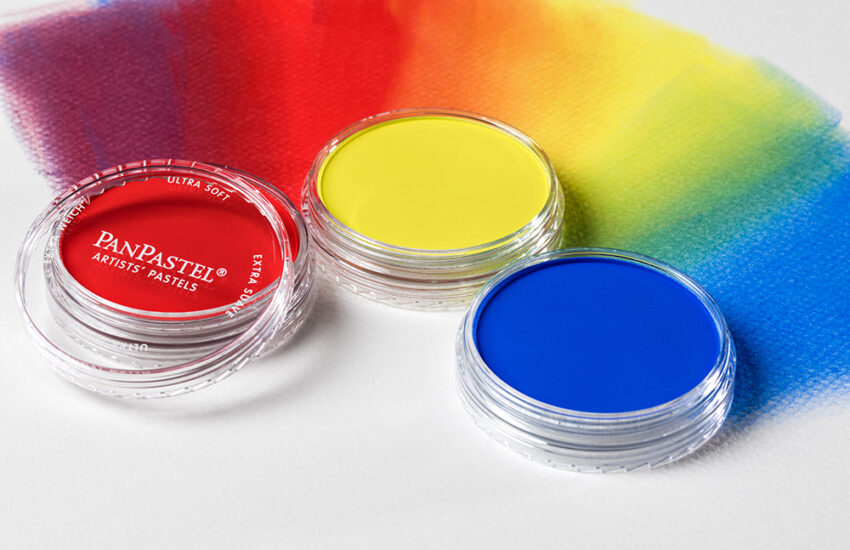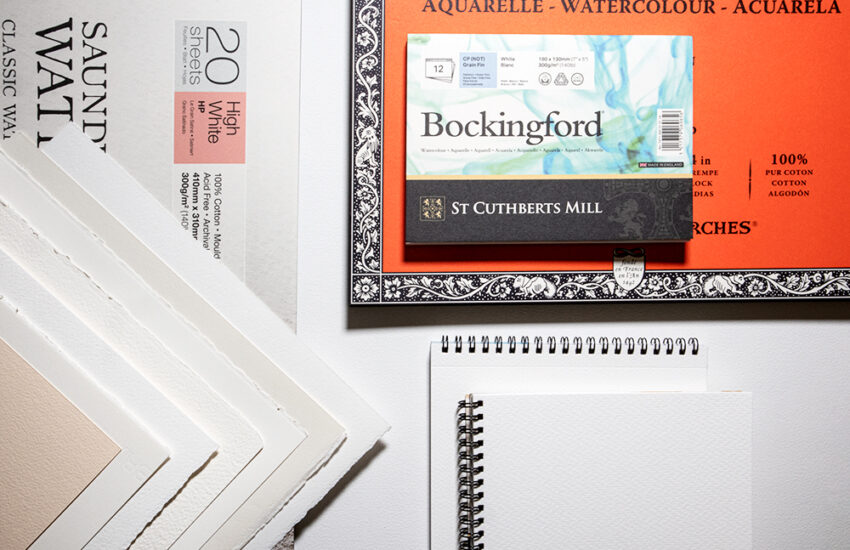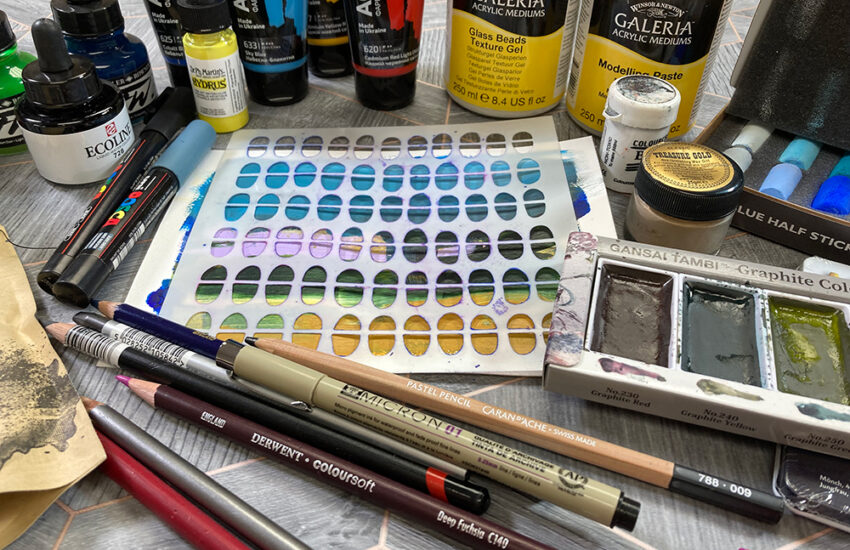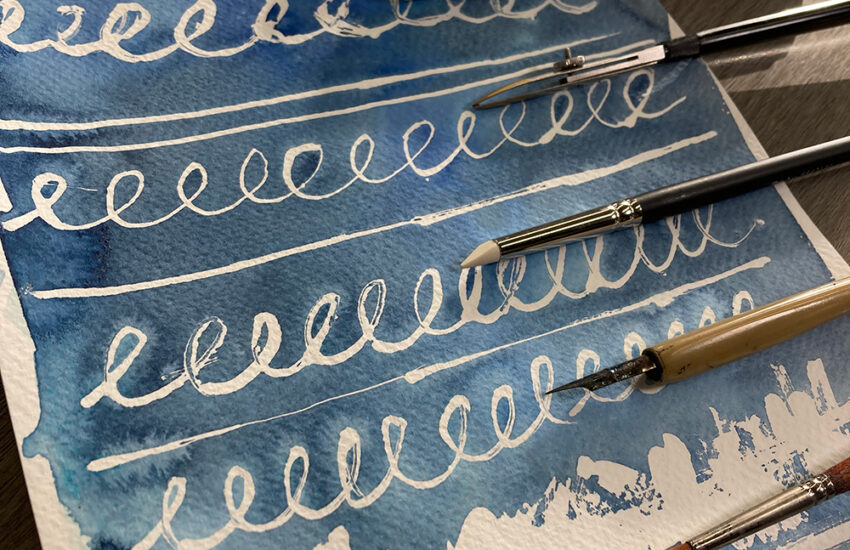A Beginner’s Guide to Artists Inks
Artists Inks can be all kinds of consistencies – from milk-like acrylic inks to the stiffest oil-based printmaking inks. The type of work you’re making will mostly dictate the type of ink you settle on. Join us as we uncover the different types of inks available, their unique properties, and how to choose the perfect ink for your creative projects. Whether you’re a beginner or an enthusiastic inker, this guide will enhance your understanding of inks and help inform your choices about the materials you use.
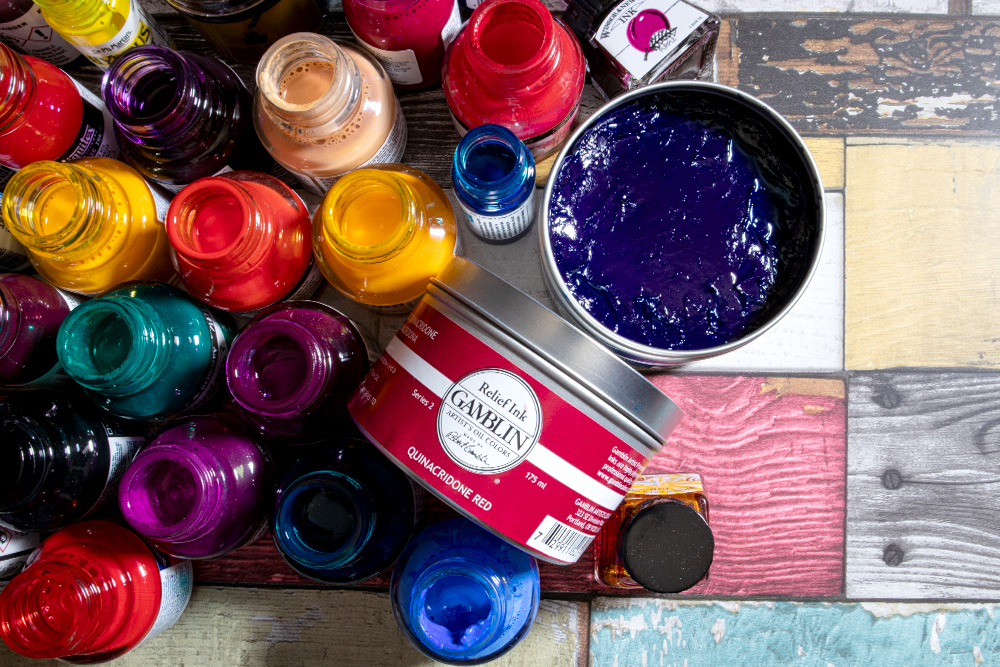
If you’ve ever found yourself lost in the labyrinth of ink options, don’t fret – you’re not alone! Navigating the world of Artists Inks can be tricky, especially given the wide choice of inks available. Manufacturers also specially formulate most inks with particular applications in mind. Do you choose a fluid colour with a milk-like consistency, or opt for something thicker? Do you know the difference between dye based and pigment based colours? If you’re feeling overwhelmed, read on and we’ll unravel the mystery surrounding these inks, delving into their unique properties and the types of projects they’re best suited for.
What is Ink?
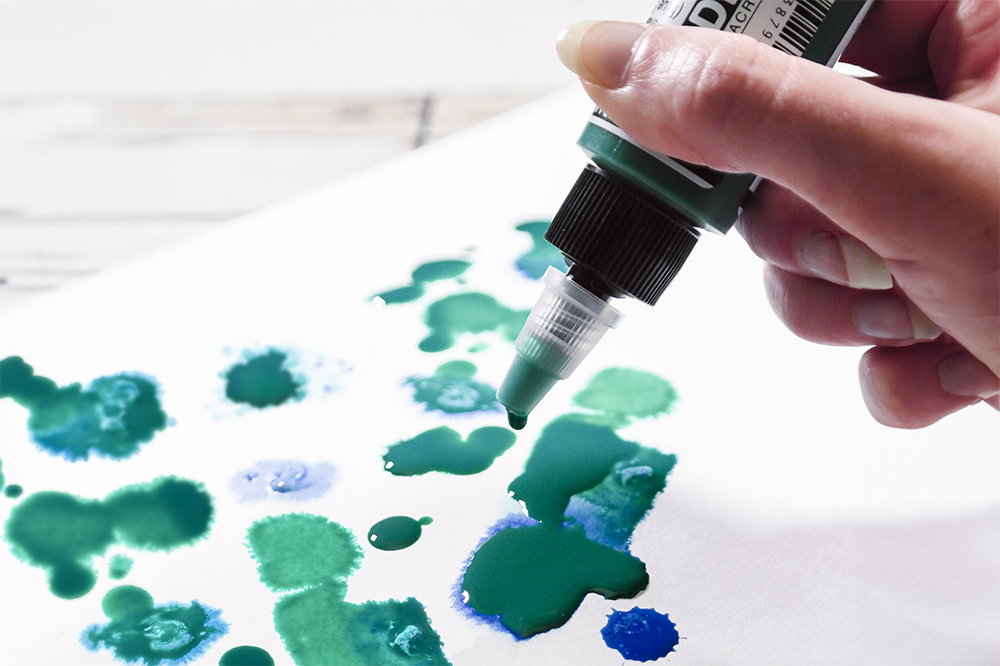
Ink is quite a broad term we use to refer to a diverse group of artists colours. Typically we’d think of an Ink being a fluid colour, suitable for drawing and painting. However, inks vary quite a lot in their viscosity. There are rich oil based colours that apply more like oil paints, to runny liquids that flow freely.
Unlike artists paints, which allow you the freedom to modify consistency and texture with mediums, inks follow a slightly different path. When you’re working with inks, choosing an ink with the right working properties is crucial from the get go. Its unmodified texture and consistency will become the cornerstone of your creative process and guide the way you apply it. Because of this, there are very few mediums available for inks. The true versatility of ink lies in the tools you use to apply the colour, rather than the modification of the colour itself.
Pigment or Dye Based?
One problem you’ll encounter when picking your ink is whether to go for dye based or pigment based colour. Dyes are soluble and readily dissolve into a liquid solution. Pigments, however, are insoluble. Instead they are made up of tiny, solid particles suspended in a medium or a binder. Dyes also chemically attach themselves to the surface you paint onto. Whereas in pigment inks, the binder acts as a kind of glue that holds the colour in place. Dyes typically produce more vibrant, saturated colours, but pigment inks are usually available in a wider range of colours.
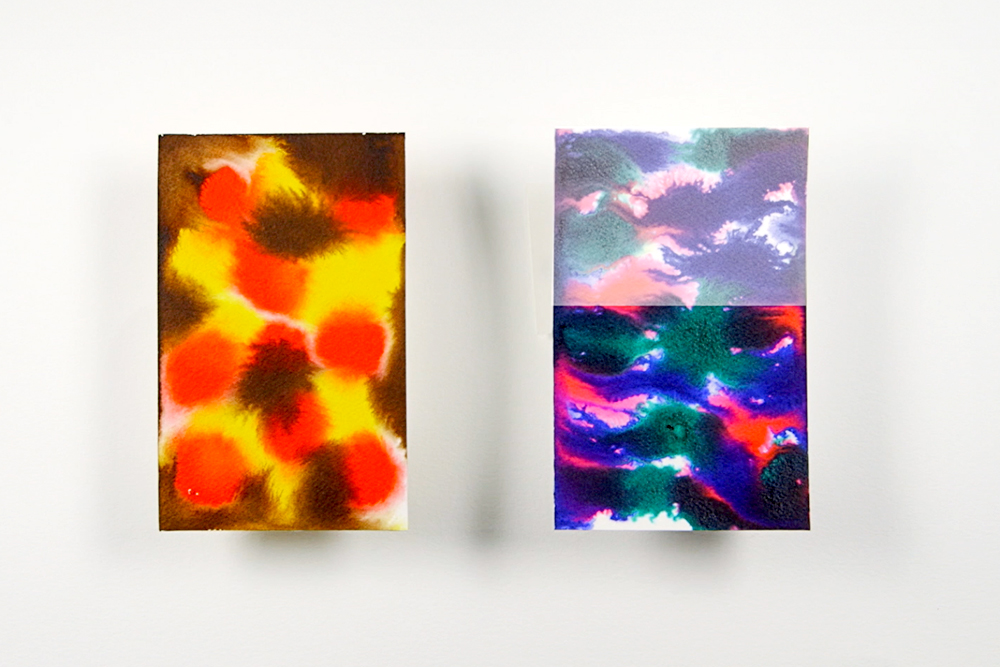
Perhaps the biggest difference between dye and pigment based colours is their lightfastness. UV rays from sunlight break down the bonds of a dye and in the process slowly destroy its colour. You can see how dyes degrade by looking at fabrics and furnishings that have been left in direct sunlight for long periods of time. The example above shows two samples of ink; Winsor & Newton Calligraphy ink, which is pigment based, to the left, and Winsor & Newton Drawing Ink, which is dye based, to the right. The bottom half of each sample was covered, then exposed to 100 years worth of light in a lab. You can see how dramatically the top half of the dye-based ink has faded.
Some artists choose to work with dyes specifically to take advantage of the natural fading process, but others prefer the greater permanence of a pigment based colour. You’ll need to take these things into consideration when selecting an ink to work with.
What are the Different Types of Ink?
Acrylic Ink
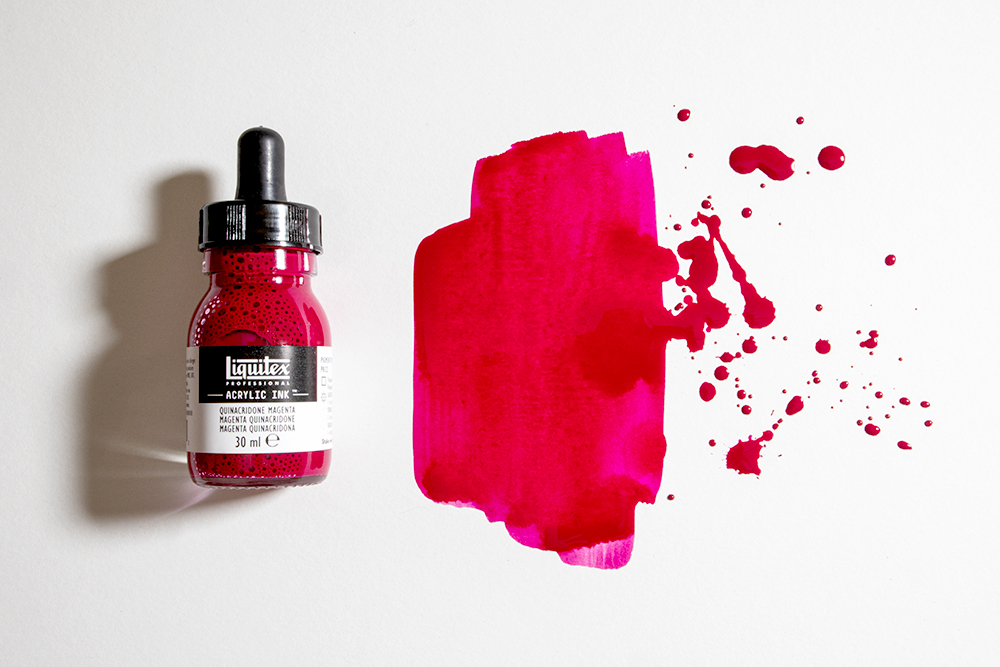
Acrylic Inks are essentially a highly fluid acrylic paint made using artists pigments bound in an acrylic suspension. Their fluid consistency makes them compatible with all kinds of painting and drawing techniques. Like acrylic paints, once they’re dry they form a waterproof film that you can’t reactivate with water. They’re also intermixable with acrylic paints, so if you’re an acrylic painter you can use them alongside your favourite acrylic colours. They vary in their transparency depending on the type of pigment used, so check the individual properties of the colours you’re purchasing if opacity matters to you.
You can use Acrylic inks straight from the bottle with a brush or dip pen to create everything from delicate linework to bold strokes of colour. They’re also compatible with acrylic painting mediums, which you can use to dilute and modify colour. Use them alongside airbrush medium and you’ll be able to apply them with an airbrush. Try them with pouring, pen and ink, watercolour effects, stamping, mixed media and more!
Watercolour Ink
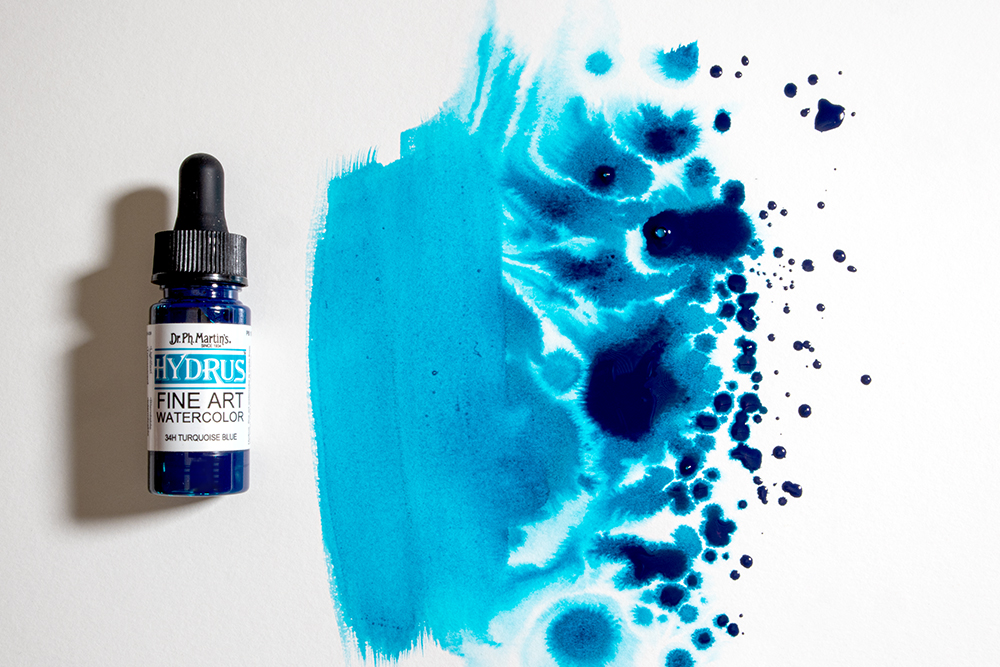
Watercolour Inks, sometimes knows as Liquid Watercolour, are a fluid watercolour paint that require no dilution to use. They retain the beautiful transparency that traditional watercolour paints are known for, but make it much easier to work with high concentrations of colour in fluid applications. They’re fantastic for wet on wet work. You can use them as a medium in their own right or combine them with traditional watercolours. Like traditional watercolours, these inks are rewettable once dry.
You can apply Watercolour Ink with the brushes you’d use with watercolour paints, but they’re also compatible with dip pens or you can use them to fill a waterbrush.
Watercolour Inks can be either dye or pigment based. Ecoline Watercolour Inks are dye based, so if you’re worried about their colour fading you’re best sticking to using them in a sketchbook or for work intended for reproduction. Dr Ph Martins Hydrus Watercolour Inks, however, are pigment based. While some colours have slightly better lightfastness than others, overall they’ll stand up much better to fading.
Alcohol Ink
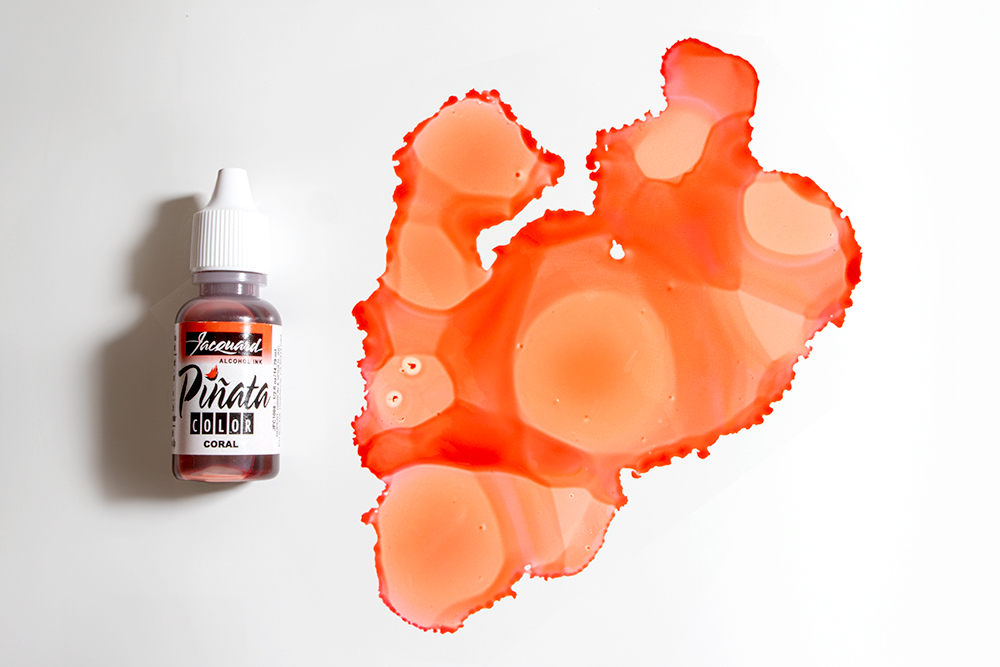
Alcohol Inks are dye-based, fast-drying inks that artists primarily use on non-porous surfaces like cardstock, YUPO, ceramics and more. The alcohol that holds the dye evaporates as you paint, leaving pools of vibrant dye behind. While there’s nothing stopping you from using them on paper and card, you won’t get the same effects with them as you would on a non-porous surface. YUPO and our more affordable cardstock are great surfaces for trying out these inks. However, they’re also compatible with surfaces like Claybord, ceramic, metal and plastics. On these types of surfaces you’ll notice that the inks create organic, cell-like patterns. They’re also great for creating poured paintings.
Once dry you can rewet these inks using Alcohol Ink Mediums or Isopropyl Alcohol. The alcohol content of the ink also means that any fresh ink will lift and manipulate any dried ink below it. You can use this to your advantage to make some great patterns, but it can take some getting used to. Be aware that the dyes in these inks are not lightfast, so they will fade with time. You should clean any tools you use with this ink with Clean Up Solution or Isopropyl Alcohol.
Drawing Ink
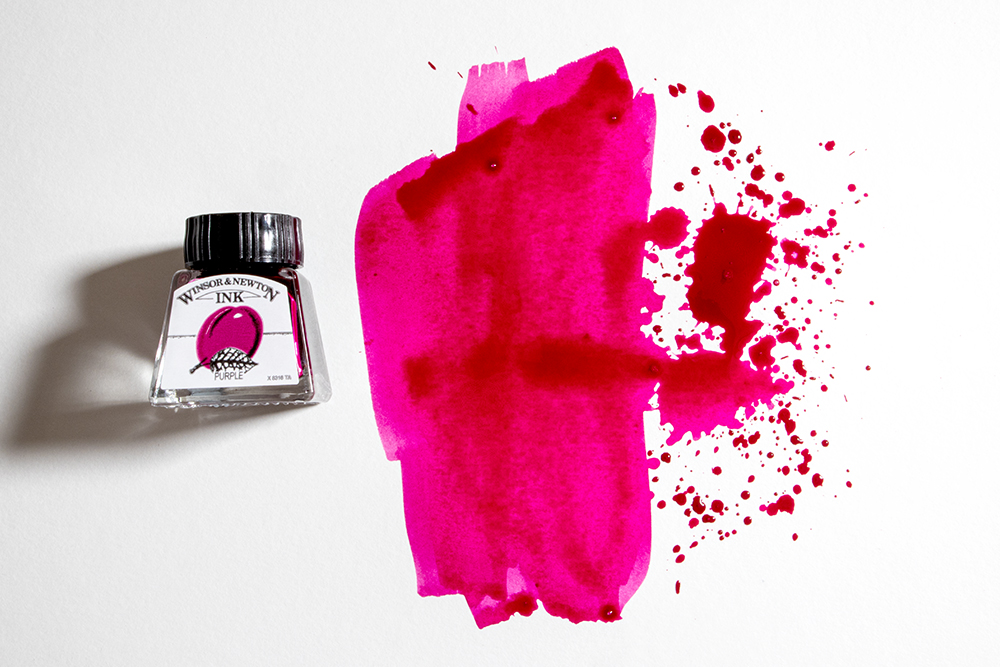
Drawing Ink is a timeless, versatile medium that has been used by artists for centuries. Don’t let the name fool you, you don’t have to use these inks for drawing alone! Artists use them for all kinds of purposes including illustrations, sketches, cartoons, paintings, pattern design, calligraphy and more. They have a fluid texture, so are perfect for applying with either a brush or dip pen, and are generally quite transparent.
Drawing Inks are available in both dye and pigment formulations, and vary quite a lot in their permanence. Winsor & Newton Drawing Inks, for example, are made using dyes in a shellac binder. The dye is susceptible to fading, while the shellac means they dry to a waterproof film. You can manipulate the ink with water while it’s still wet, but once dry it won’t budge. If your ink is rewettable, then you might also be able to use it in a fountain pen.
Perhaps the most popular of all our drawing inks is Black Indian Ink. This ink has a rich history and has been used by humans for centuries. Available in both a waterproof and rewettable formula, it’s a versatile ink with a wide variety of applications. You can find out more about Black Indian Ink in our A Beginners Guide To Indian Ink blog post.
Calligraphy Ink
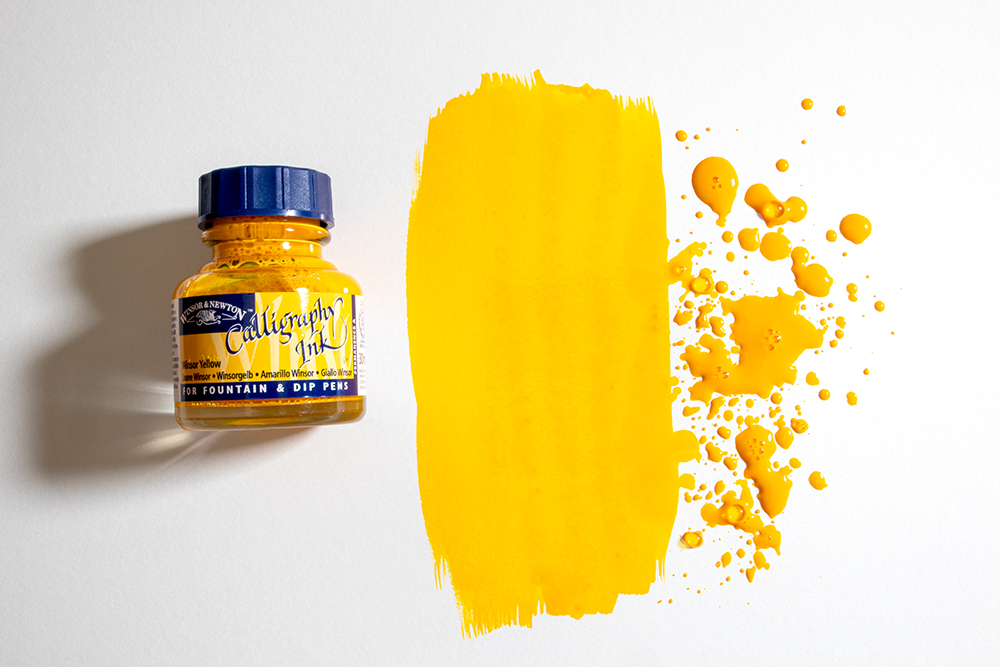
Calligraphy Inks are similar in many ways to Drawing Inks, however most have special formulations that lend themselves well to calligraphy techniques. They tend to be non-clogging, are typically pigment-based and are more opaque than Drawing Inks. However, they are usually available in a more limited range of colours. Their fluid consistency also allows you to apply them similarly to a Drawing Ink. Like Drawing Inks, Calligraphy Inks can be watersoluble or waterproof. Winsor & Newton Calligraphy Inks aren’t waterproof, so if you splash or drip water on finished work it will smudge. You can use some water soluble Calligraphy Inks in Fountain Pens are they are less likely to clog up the mechanism, however, its best to check to see if the ink you’re using is compatible with fountain pens before use.
Printmaking Ink
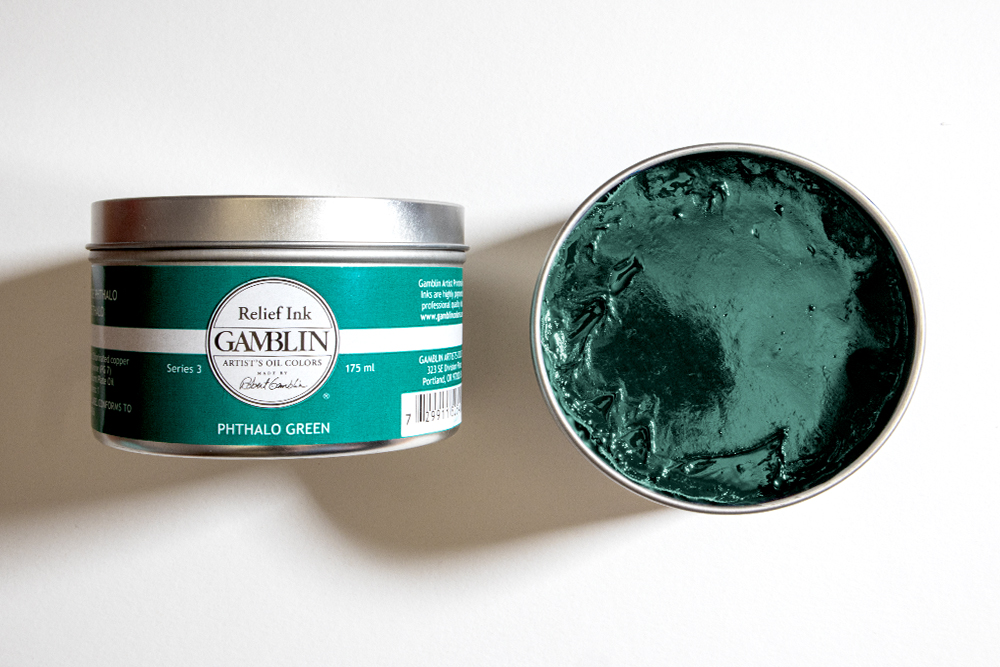
Printmaking Ink is a type of ink specifically formulated for printmaking processes. These inks are typically thicker in consistency than other inks, and their main application will be for a specific printmaking technique. Printmaking Inks can be either water or oil based. Water-based inks tend to have a softer consistency while oil-based printmaking inks have a rich consistency similar to oil or acrylic colour. There are different types of printmaking inks for specific printmaking methods. Each type of ink has its own specific properties that make it best suited to its particular application.
Ink Painting Brushes and Tools
The versatility of inks really lies in the tools that you use to apply them. You can use all kinds of tools to work with ink – whether you pick up a new set of brushes or find a stick with an interesting shape on your travels. You can apply most inks with a brush or dip pen.
Dip Pens
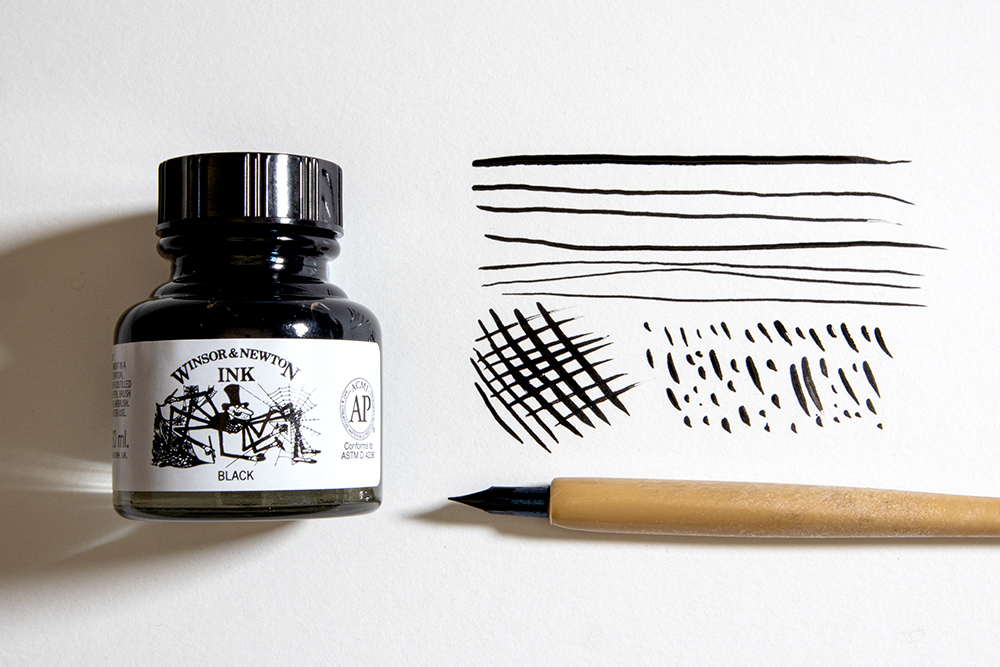
Dip pens allow you to apply ink in precise, fine lines. There are a variety of dip pen pens available, which will allow you to draw lines of different width or create stylised lines more commonly associated with calligraphy. Fountain Pens allow you to work with inks in a similar way, without the need to reload your pen with ink. You can also fit some fountain pens with converters, that allow you to fill the pen with a bottled ink rather than using cartridges. This allows you to use the pen with a wider variety of inks. You’ll need to check the compatibility of your ink with fountain pens before using.
Brushes
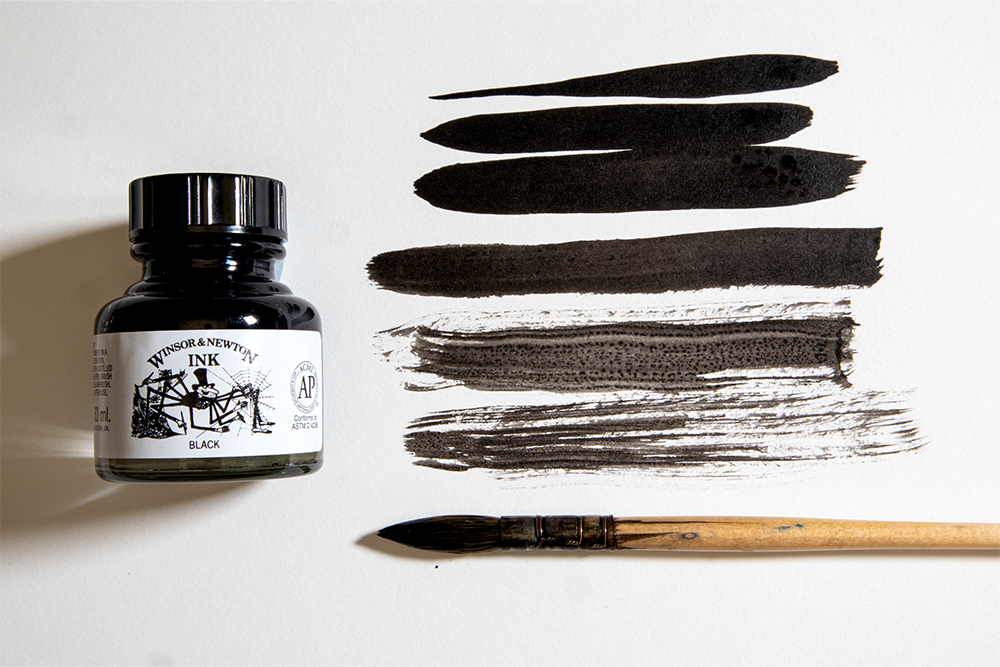
Brushes allow you to vary your line width a little more depending on the amount of pressure you put on the brush when you paint. Watercolour brushes with soft hair are fantastic for use with fluid inks. Their soft fibres hold good amounts of fluid and are extremely responsive to changes in pressure. With these brushes you’ll be able to paint freely without loading your brush too often.
Pipettes
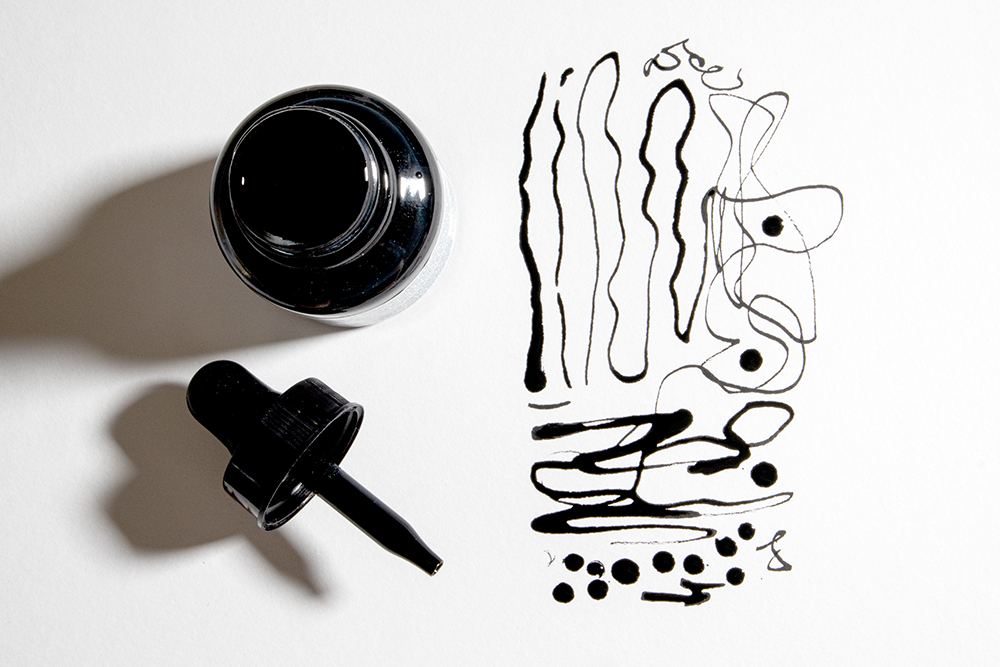
Some inks have a handy pipette in the lid. These pipettes are great for carefully calculating mixes, but you can also use them to directly apply ink to your surface. You can use the pipette like a drawing tool to create loose linework or drip and splash ink directly onto your art.
Printmaking Tools
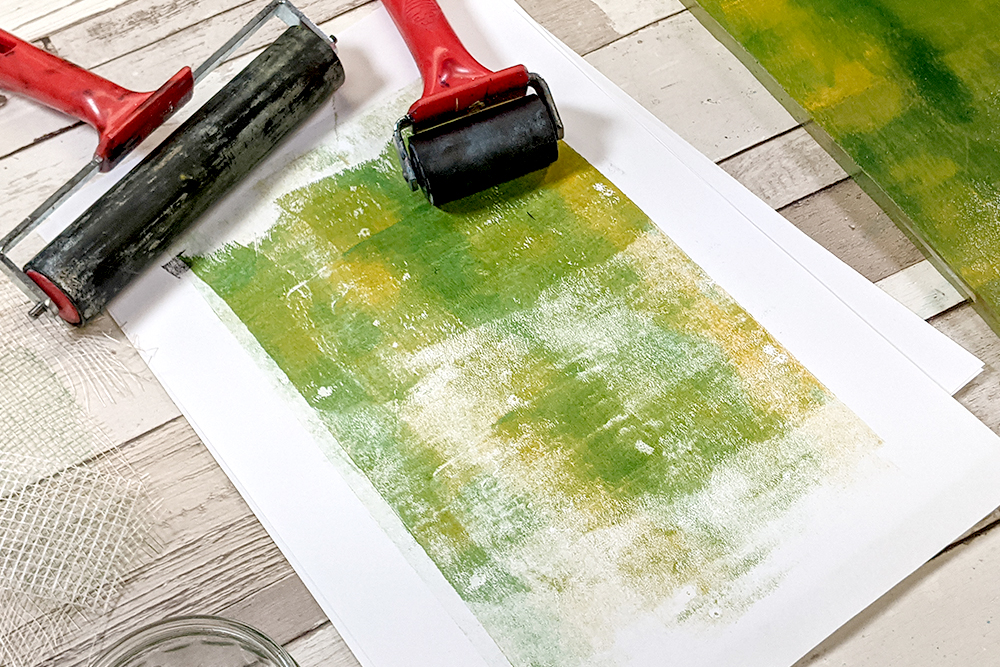
If you’re using Printmaking Inks then you’ll need to use the tools associated with the type of printmaking you’re doing in order to create your artwork. Printmaking involves tools like brayers, blades, gel plates, blocks and more.
Ink Painting Surfaces
Paper is the most common choice of surface for ink drawing and painting, but you can work with different substrates depending on the type of ink you are using. The surface you opt for will significantly impact how you ink behaves and looks.
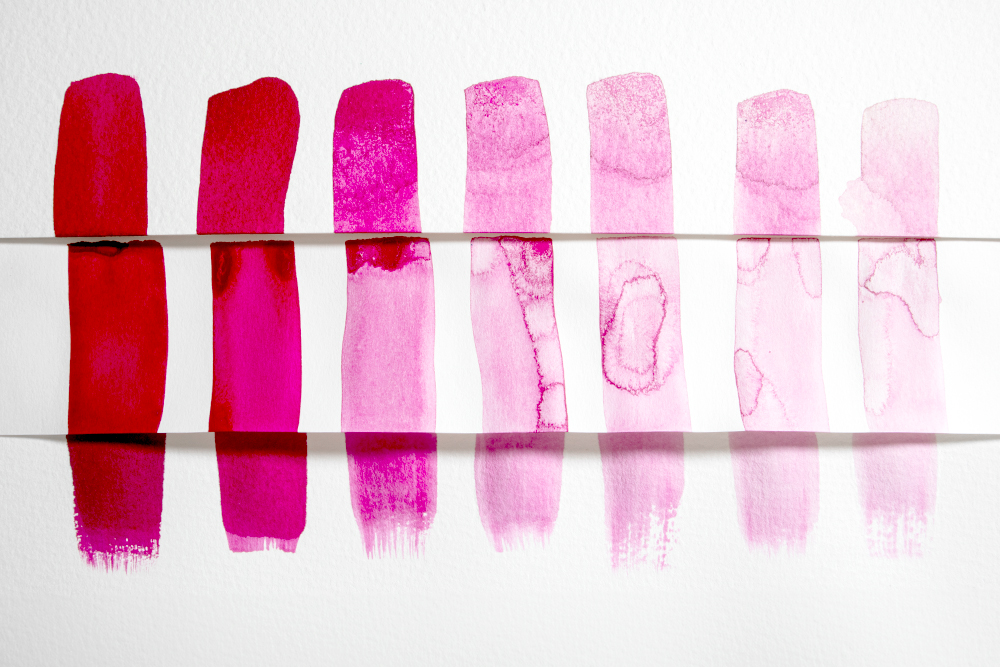
You can use almost any type of paper with inks. Look at our selection of papers and you’ll see that there’s a wide range available. You’ll need to think about the colour, texture and sizing on the paper when you select your surface. Waterleaf (unsized) or soft sized papers (like Printmaking papers) behave differently than heavily sized papers, like Watercolour paper. The less sizing on the paper the more likely your ink is to bleed or feather. Conversely, the harder the sizing the more crisp your linework will be – although you’ll notice that if you work with pens the application will become more scratchy.
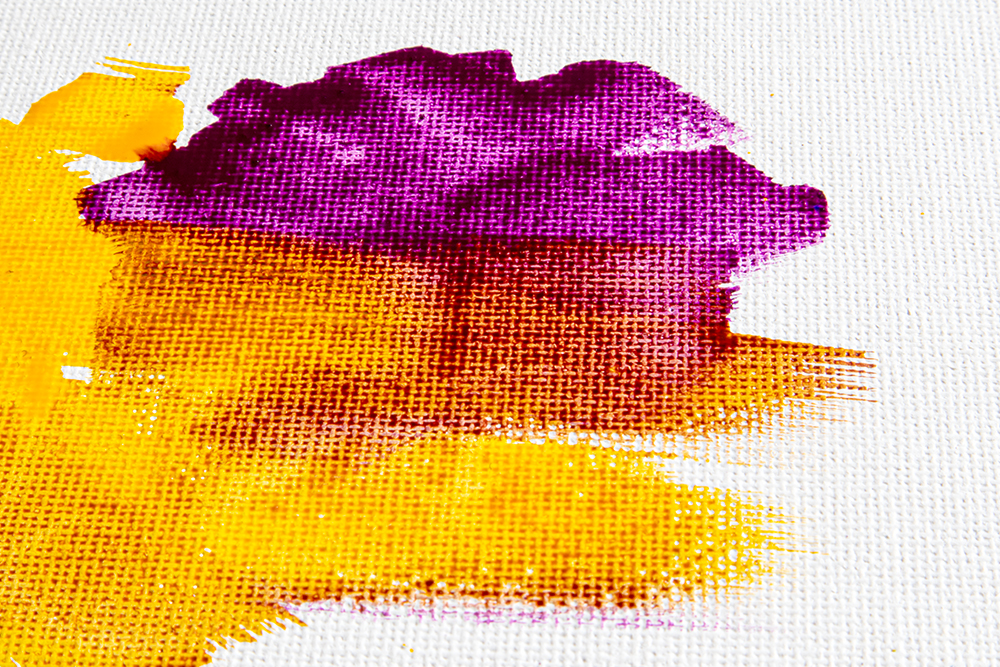
Canvas and panels are also quite popular for ink painting. The surface of canvas in particular can create some great textures when fluid colour settles into the pits in the weave. You’ll have to make sure that you prime your canvas in a way that suits your technique. Some artists like to work with ink on unprimed canvas to take advantage of a similar sort of bleeding effect that you might get with paper.
Dive into the Vibrant World of Artists’ Inks
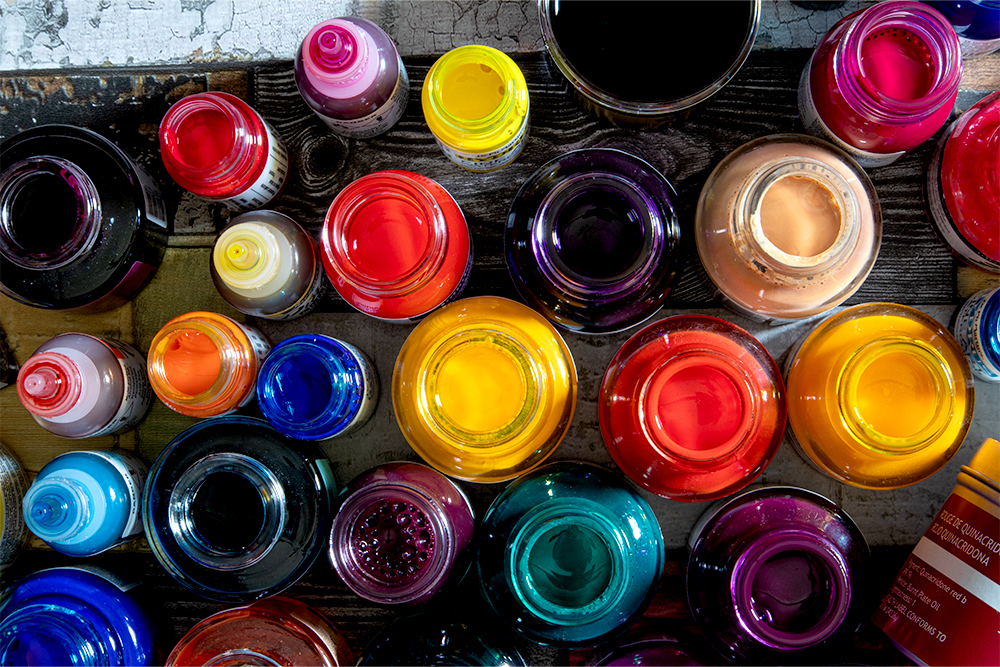
Ink, in its various forms, holds a special place in the art world. This medium with brimming with potential and we hope this blog post encourages you to explore it – whether you’re just dipping your toes into a new medium or looking for new ways to use your favourite inks. If you’re ready to let your creativity flow with inks, we offer a fantastic range of artists’ inks, along with all the brushes, paper, and accessories you’ll need to start on our website.
Want to learn more about working with Inks?
Check out some of our other ink painting guides:



